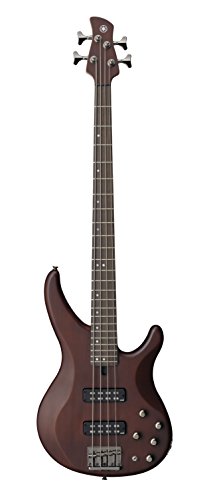How to Choose the Electric Bass Guitars
Electric Bass Guitars: A Comprehensive Guide To Choosing The Right One

- 1. Electric Bass Guitars: A Comprehensive Guide To Choosing The Right One
- 1.1. Evolution of the Electric Bass Guitar
- 1.2. Understanding the Construction of a Bass Guitar
- 1.3. What To Consider When Buying An Electric Bass Guitar
- 1.3.1. Price Range
- 1.3.2. Pickups and Electronics
- 1.3.3. Scale Length
- 1.3.4. Neck Variation
- 1.3.5. Scale Length
- 1.3.6. Tonewood Impact
- 1.3.7. Aesthetics and Finish
- 1.3.8. Hardware and Accessories
- 1.3.9. Preferred Music Style
- 1.4. Techniques and Playing Styles
- 1.5. The Future of the Electric Bass Guitar
- 1.6. Conclusion
From the soulful vibrations of jazz to the thunderous beats of rock, the electric bass guitar stands as an emblem of rhythm, groove, and melody in contemporary music. As a fundamental component of various musical genres, the electric bass guitar possesses a unique aura that captivates both musicians and listeners alike.
Evolution of the Electric Bass Guitar
The electric bass guitar can be traced back to its origins in the early 1930s, stemming from the necessity for a more powerful and adaptable instrument in contrast to the traditional double bass. Innovators such as Paul Tutmarc and Audiovox developed some of the initial electric bass versions, characterized by their more condensed body and solid build.
Nonetheless, the music industry was revolutionized by the iconic creation of Leo Fender in the 1950s—the Precision Bass, often known as the P-Bass. This four-stringed instrument represented a pivotal transformation, offering improved tonal clarity, increased portability, and a unique sound, thereby reshaping the landscape of contemporary music.
Understanding the Construction of a Bass Guitar
Before making your inaugural bass guitar purchase, it's crucial to familiarize yourself with its various components. This knowledge not only facilitates comprehension when discussing instruments with fellow players but also aids in developing a deeper understanding of your own instrument.
The bass guitar consists of three primary segments housing several key components:
Body
- Bridge & String Saddles: The foundation where the strings find support and are affixed to the bass's base.
- Pickups: These devices detect string vibrations and convert them into an electrical signal, which is then transmitted through an amplifier.
- Volume and Tone Knobs: These individual controls dictate the tonal quality of your bass guitar.
- Pickguard: A protective layer made of laminated material shielding your instrument from pick-induced scratches.
- Output Jack: The point where your output cord connects. From here, the other end plugs into your amplifier.
- Strap Buttons: One located at the bottom and another near the upper section of the bass guitar body, providing attachment points for a strap.
Neck
- Nut: A small component situated between the headstock and fretboard, elevating the strings above the fretboard to allow clear sound production when fretting a note.
- Frets: Thin metal strips guiding finger placement for producing specific notes on the fretboard.
- Fretboard: A lengthy wooden strip extending from the headstock to the body of the guitar.
- Fret Markers: Small inlaid dots placed between certain frets on the fretboard, aiding in visualizing the fret being played, particularly when utilizing tablature.
Headstock
- Tuning Pegs: These pegs are adjustable to tighten or loosen the bass guitar strings.
- String Tree: A fixture securing the strings in place.
What To Consider When Buying An Electric Bass Guitar
Choosing the right electric bass guitar involves considering several factors tailored to your preferences. A well-suited bass guitar amalgamates various attributes, including price, size, and more. When purchasing a bass, here's what to examine:
Price Range
The cost of a bass guitar spans a wide spectrum, from below $150 to $1,500 or higher. It's crucial to align your budget with your purchase. Quality beginner bass guitars are available within the lower price brackets, offering instruments of good quality.
Pickups and Electronics
Pickups are crucial as they convert string vibrations into electrical signals. Different pickup types like single-coil, split-coil, and humbuckers produce distinct tones. The electronics system, including tone controls and preamps, also influences the sound. Active pickups with built-in preamps offer more tonal options and better signal quality but might require batteries. Evaluate these aspects to match the sound you seek.
Scale Length
Scale length refers to the vibrating length of the strings from the nut to the bridge. Longer scale lengths can offer increased tension and a slightly different feel while playing. They are often found in 34-inch scales, while shorter scales, like 30 inches, might be more comfortable for players with smaller hands or those who prefer a warmer tone.
Neck Variation
The neck design is a vital consideration, catering to different preferences and playing styles. Variations include:
- U-shaped: Also known as "baseball bat" necks, they are thick and rounded, suitable for players with large hands.
- V-shaped: Available in "soft" and "hard" V-neck types, with the former being more rounded and the latter often preferred for its comfort during play.
- C-shaped: These necks come in an oval or "modern C" flat oval shape, adaptable to various playing styles.
Scale Length
Basses come in long-scale (standard 34") and short-scale (30"). Short-scale basses are advantageous for players with smaller hands due to the reduced distance between frets.
Tonewood Impact
The type of wood used affects the guitar's sound, tone, and weight. Understanding the differences in bass tonewoods aids in making an informed decision.
Aesthetics and Finish
While the sound and playability are crucial, the aesthetics of the bass guitar can also be important. Some players might prefer a particular color, finish, or design that resonates with their personal style or the image they want to project on stage.
Hardware and Accessories
Evaluate the hardware quality, including the tuning pegs, bridge, and the quality of the nut. Well-built hardware ensures tuning stability and overall playability. Additionally, check if the bass guitar comes with essential accessories like a case, strap, or cables.
Preferred Music Style
Consider the genre or specific artists that inspired you to take up the bass. Different music styles, such as rock, metal, jazz, and funk, may lean towards solid-body bass guitars, although blues and experimental genres might favor semi-hollow body styles. Exploring various options and testing each for the ideal sound is part of the enjoyable shopping experience!
Techniques and Playing Styles
Bass playing involves various techniques, including fingerstyle, slap bass, tapping, and the use of a pick, each contributing a unique flavor to the music. The choice of technique often defines the player's style and influences the overall sound of the music.
The Future of the Electric Bass Guitar
With advancements in technology and innovation, the future of the electric bass guitar appears promising. From the development of new materials enhancing tonal qualities to the integration of digital effects and MIDI capabilities, the bass guitar continues to evolve, adapting to the changing landscape of music production and performance.
Conclusion
The electric bass guitar has left a deep and lasting imprint on the world of music. Its unique tonality, adaptability, and capability to harmonize rhythm and melody establish it as a crucial instrument in the musical domain. Its ongoing evolution and capacity to ignite inspiration in successive generations of musicians affirm the electric bass guitar's significance as a symbol of creativity and advancement in the field of music.










